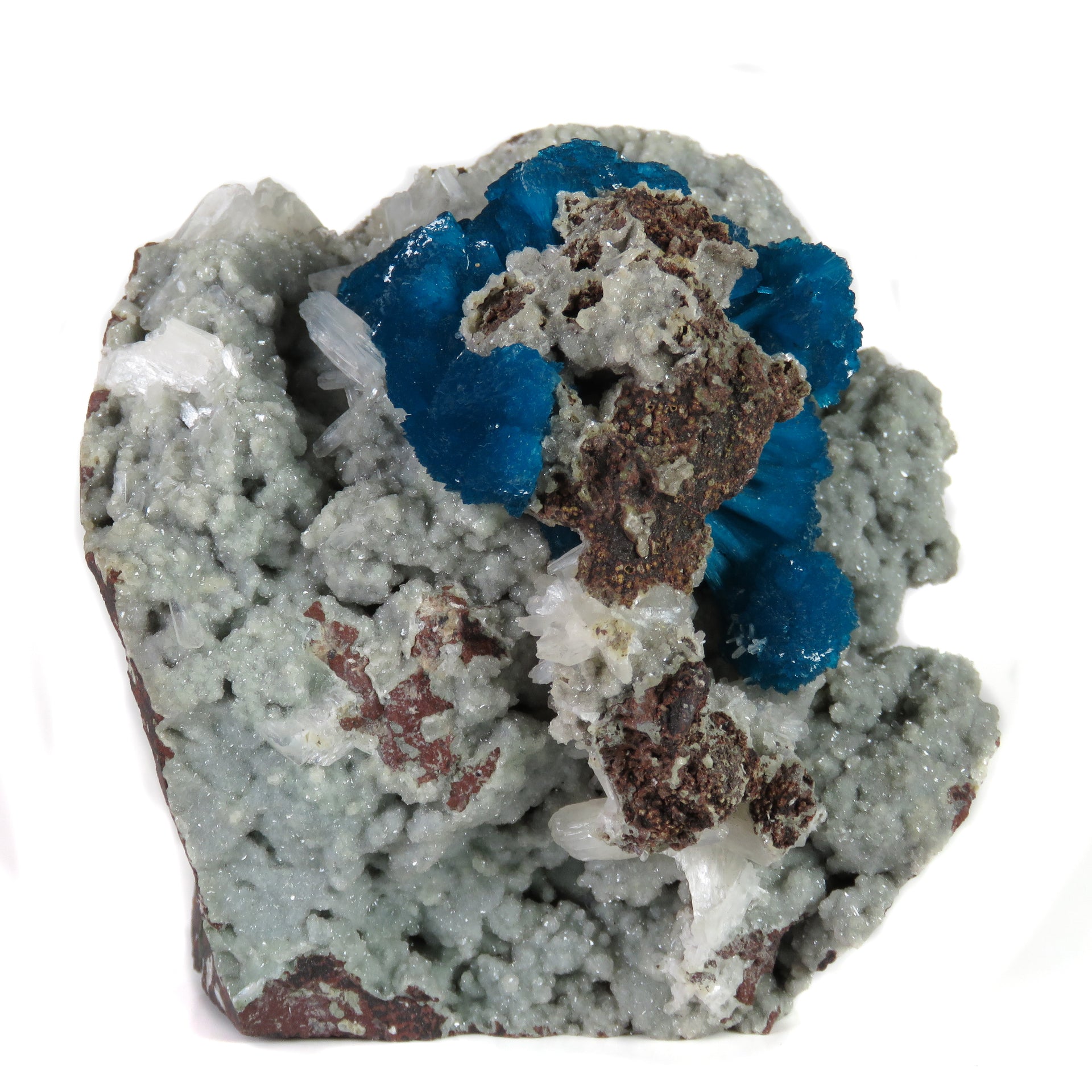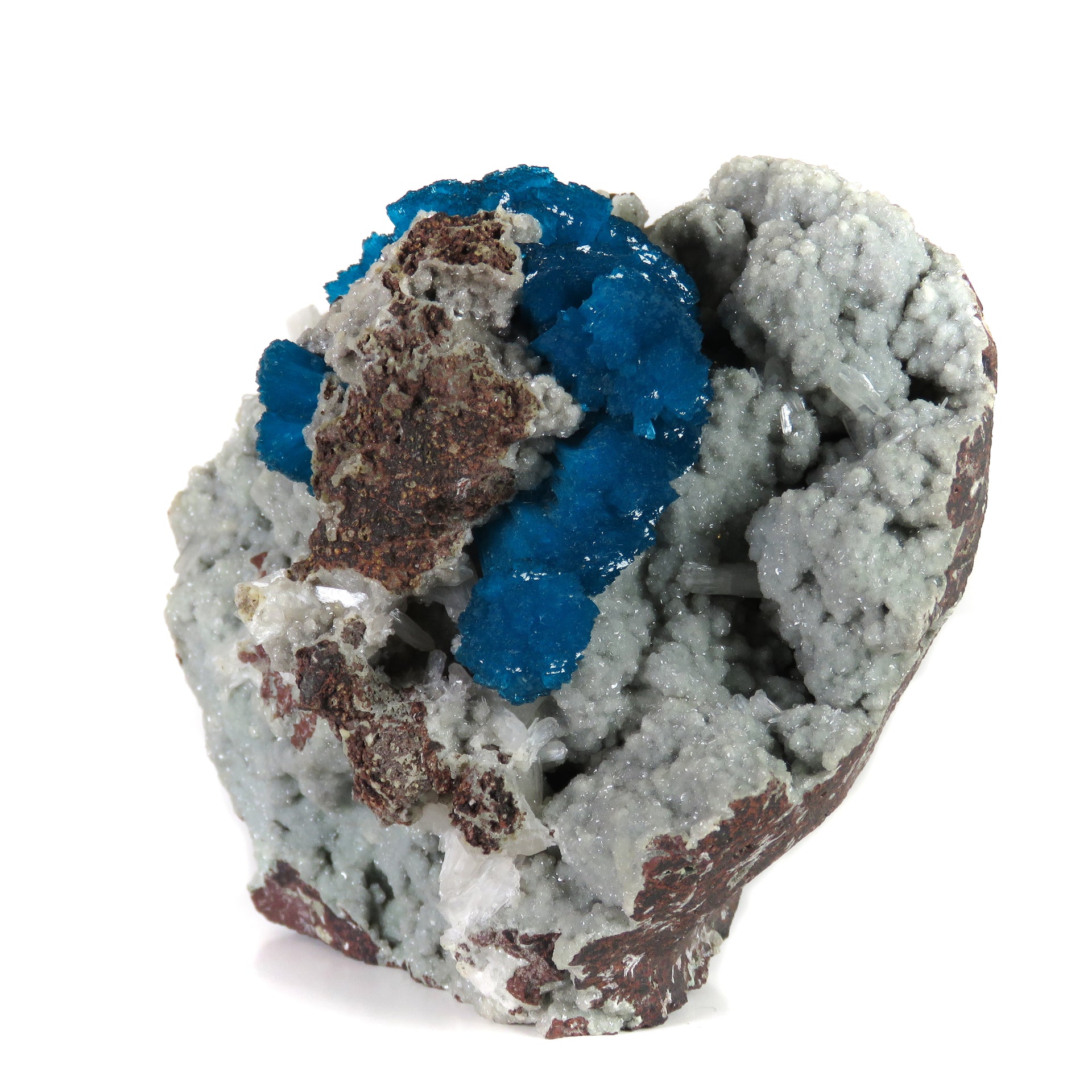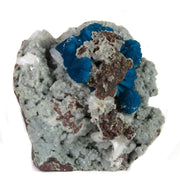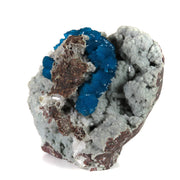CAVANSITE ON STILBITE
Electric blue cavansite formed in a long cluster wrapping around a protrusion of stilbite covered host rock. The cavansite shoots outwards in all directions, and at the end of the grouping sits a spherical growth that the species is known for. Looking into small pockets, one can see that the cavansite growth continues deeper out of sight. It's highly uncommon to find this much of it together in one continuous grouping, and though it’s hard to measure I’d warrant it measures to at least 8 cm. Together with a backdrop of light gray microcrystalline stilbite and some larger stilbite crystals, this piece makes for a phenomenal display. As with a lot of cavansite from these finds, the color is difficult to capture on camera, and pops out a lot more when viewing in person; below I've gone ahead ahead and attached the video which I think best encapsulates what it looks like to see this specimen in the sunlight. This medium size cabinet piece is truly world class in terms of visuals and would make a gorgeous addition to any collection.
More info:
Cavansite from the Wagholi Quarry District forms within vesicles and fractures of Deccan Trap basalts. The mineralization occurs through low-temperature hydrothermal processes, with temperatures typically below 100°C. Formation results from the interaction of calcium-rich zeolite-forming solutions with vanadium mobilized from the host basalt. The specimens display characteristic radiating sprays of deep blue prismatic crystals, typically ranging from 2-8mm in length. Crystal growth commonly occurs on a substrate of stilbite or other zeolite minerals. Individual crystals exhibit orthorhombic morphology with distinctive terminal faces. The paragenetic sequence represents late-stage hydrothermal mineralization within the zeolite facies, where specific conditions of pH and vanadium concentration promote cavansite formation after initial zeolite crystallization.




